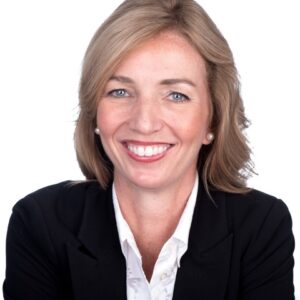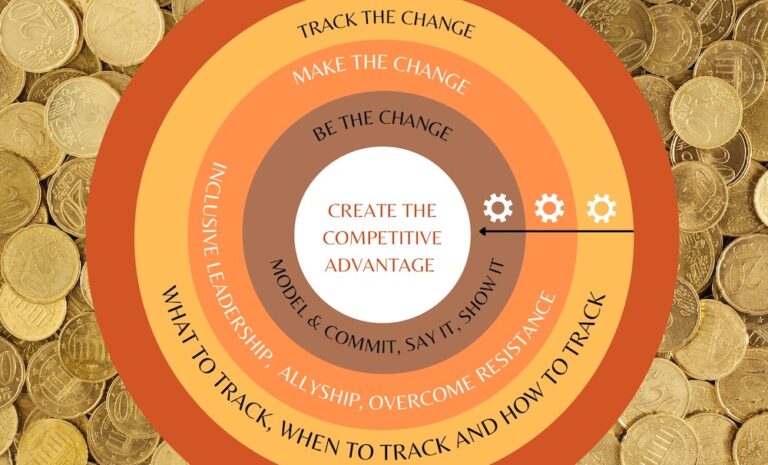An Interview with the Centre for Social Intelligence’s Kelly Cooper
Kelly Cooper is the Founder and President of the Centre for Social Intelligence (CSI). Ms. Cooper works with leaders and change agents to create a diversity and inclusion transformation within their organizations and across a sector. She is the D&I expert co-leading the Free to Grow in Forestry initiative which aims to achieve gender equality and meaningful inclusion of women, Indigenous peoples, and new Canadians at all levels from technical to executive level positions in the forest sector.
Members of the Wood Pellet Association of Canada (WPAC) have made great strides in its efforts on D&I starting with a commitment to be among Canada’s most diverse and inclusive trade associations. Today, women in Canada’s pellet sector are leading organizations and committees, and responsible for pellet production, capital development sustainable forest management. But there’s more that we can do. That’s why Dr. Fahimeh Yazdan Panah, WPAC’s Director of Research and Technical Development, recently sat down with Kelly to learn more about her important work and how the wood pellet sector can further advance D&I.

What led you to become an advocate for DEI?
I was pursuing my undergraduate degree at the U of Toronto in the early 1990s in environmental science when the concept of sustainable development (SD) was just emerging on the international stage. The Brundtland Commission released the report “our common future” in 1987 where this new approach to development was explained. Its message was clear: we have to reframe development such that the economics of it did not compromise the social or environmental aspects.
At that time, the world was focused on the environmental aspects of SD. Executives were learning new ways to conduct their business that were not harming the environment, while still reaping an economic return. We started to see for example, closed loop systems emerge in factories, and attention being paid to reducing/eliminating air pollution. This was stimulated by creating an emissions trading scheme, bringing greater awareness to protecting the environment and simultaneously creating a positive effect to the bottom line.
Having worked on the environment and economic aspects of SD for the first 20 years of my career, I wanted to turn my attention to the social side. Through my research that I started in 2013, I learned it was through investing in your people that you can get a return on your investment, and by doing so, stimulate greater innovation, higher performance, and better business outcomes. Ceating a workplace culture where various dimensions of diversity are welcomed and appreciated for their new insights and perspectives – that is where creativity and innovation come from. And with that innovation, you can attain a positive return to your bottom line.
What is D&I about?
I think it’s really about power and control. And there’s a lot of fear about what people will lose with changing the status quo. Change is tough for most people and it boils down to the fear of the unknown. What I try to do is show people that change has its benefits, both economically and socially. It’s also about respecting everyone, no matter what they look like. As I like to say, it’s common “cents” stuff!
What was your starting point with D&I?
The sector wide approach to shifting the workplace culture to be more accepting of women began in 2014 when I was hired by Women in Mining Canada. I came up with the idea of developing a national action plan that looked at barriers to women getting into senior executive roles and technical positions. I created a steering committee comprised of 12 mining companies and two mining associations, and together we identified the barriers and developed approaches and tactics that each company could apply internally. It’s spawned several association and company-led initiatives and today women make up 15% of the sector’s workforce.
How did your involvement in the forest sector come about?
On the heels of the work with the mining sector, the Forest Products Association of Canada approached me. I had learned quite a bit with the mining project and wanted to do things a little differently to ensure the greatest impact. So instead of just engaging the private sector, I sought out public, private, not for profit, Indigenous and academia representatives to sit on the committee, and formed a partnership with the Canadian Institute of Forestry to co-lead the initiative.
Our steering committee set out to develop a national action plan that aimed to increase women in both senior executive roles and technical positions in the forest sector. Within a year, that focus opened up to include all people, regardless of race, religion or gender. This was the genesis for the Free to Grow in Forestry Initiative.
WPAC has made a commitment to be among the most inclusive and successful trade association by actively seeking out diversity across our industry. What steps can we as an association take to make this a reality?
It starts with a change management lens. You are at the beginning of this journey and leading your members, meaning increasing awareness on this topic and explaining the benefits. This awareness leads to creating a desire to act.
Once the desire is there, you can lead them through training and skills/knowledge development. This will create confidence in what they are doing and create a sense of “this is here to stay”. As you move through these steps, the early adopters will inspire others to take action both across the sector and within their companies.
Can you give us an example of culture change through a D&I awareness and training in industry?
There are many easy examples – women in senior executive positions; behaviour that shows respect for everyone regardless of race, gender or religion; recruitment from non-traditional channels; and finding pathways to promote and retain women in the sector.
What’s the risk for companies and our sector if we don’t advance D&I?
The world is changing rapidly, and Canada is facing unprecedented labour market shortages due to baby boomers retiring. Companies across all sectors are competing for labour – qualified labour – no matter what the gender or race. To compete in this world, companies will need to abandon homogenous thinking and create diverse workforces where potential employees can see themselves and reflect the society in which we all live.
The fact is that leaders acting on D&I are reaping the rewards of diverse thinking and seeing results with their bottom line. I provide several examples in my book. There are plenty of great examples in the wood pellet sector too which WPAC has highlighted in its communications efforts including appointments of women to leading roles in safety, transportation, sustainability, and production.
How does the Free to Grown in Forestry Initiative work?
It was built around a framework for action with three main pillars of activity:
- Building the evidence base – three main actions were realized in this pillar – Diversity representation data across the sector was gathered for the first time; created gender equality principles for the sector; and developed a qualitative report on indigenous women to highlight their leadership in the sector and in their communities.
- Fostering an inclusive culture by assessing what tools were out there to help people shift their workplace culture. From my previous work I knew that the tools were all about “the why”– why should people do anything on this at all? The answer in economic terms was clear: ignore this and get left behind. Of course, once you know “the why” then it’s about the “how” and the fact was there wasn’t a practical tool, so I wrote Lead the Change: The Competitive Advantage of Gender Diversity and Inclusion. This book explains the value proposition of diversity, equity and inclusion (DEI) and provides a blueprint for how to take action. The three main reports that came out of the Free to Grow initiative are on: how to overcome resistance to DEI in the workplace; how to be an inclusive leader; and how to be an effective ally.
- Repositioning the sector through communications – showcasing women as equal players in the forest sector, and where everyone is free to grow to their greatest potential in their career. That meant rebranding the sector through images and adapting the language we use in our hiring practices. We created a website, monthly newsletter and a podcast where I interview people from the C-suite, to transgender, to experts in DEI and beyond, to start telling the stories and perspectives of different people so that people can learn in a non-confrontational way about what is happening through the eyes of underrepresented people in this sector.
What’s next for Free to Grow in Forestry?
We are now in phase 2 (2021-24) and have a focus on the last two pillars of activity – meaning training and skills development as well as communications. We have taken the reports on “the how” and turned them into online training modules. We have also developed webinars through our FTGF website on these topics. We have an upcoming webinar on allyship on April 27 and will hold another webinar in the fall on inclusive leadership. We have also created communication tools and tactics including a podcast that is available to anyone who wants to support this movement.
Fahimeh Yazdan Panah, Ph.D., is the director of research and technical development for the Wood Pellet Association of Canada.

